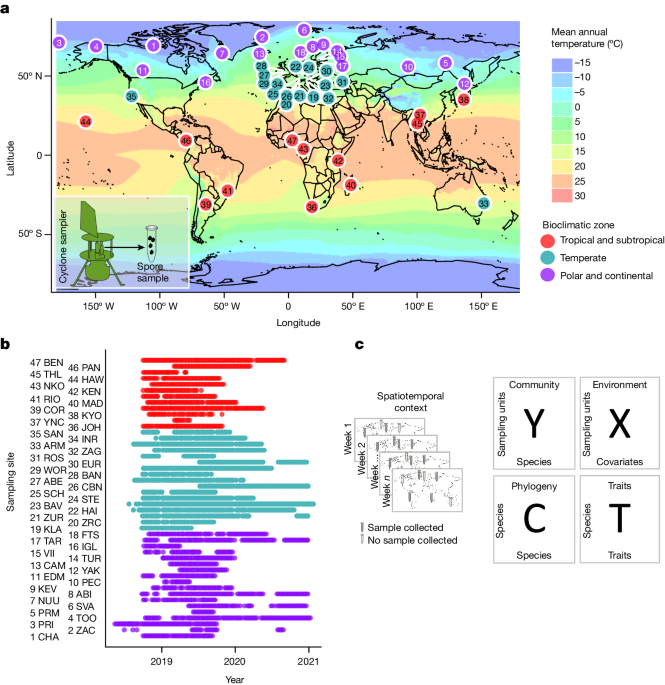Airborne DNA reveals predictable spatial and seasonal dynamics of fungi
Recent advancements in DNA analysis techniques have allowed researchers to study the distribution and dynamics of fungi in the atmosphere. By analyzing airborne DNA samples collected from various locations and time points, scientists have been able to uncover predictable patterns in the spatial and seasonal dynamics of fungi.
Understanding the spatial dynamics of airborne fungi
One of the key findings from these studies is that the composition of airborne fungal communities varies significantly based on the geographic location. For example, fungal diversity and abundance in urban areas differ from those in rural or forested areas. This is due to various factors such as air pollution, temperature, and humidity levels.
Seasonal patterns of airborne fungi
Another important aspect of airborne fungal dynamics is the seasonal variation. Researchers have found that certain fungal species are more prevalent during specific times of the year. For example, Aspergillus and Penicillium species are more abundant in the spring and summer months, while Cladosporium dominates in the fall season.
Impact of environmental factors
Environmental factors such as temperature, humidity, and wind speed also play a significant role in shaping the dynamics of airborne fungi. Higher temperatures and humidity levels create favorable conditions for fungal growth and dissemination, leading to an increase in fungal spore concentrations in the air.
Implications for public health
Understanding the spatial and seasonal dynamics of airborne fungi is crucial for assessing the potential health risks associated with exposure to fungal spores. Certain fungal species are known to cause allergies, asthma, and respiratory infections in humans. By monitoring fungal diversity and abundance in the atmosphere, public health officials can take proactive measures to protect vulnerable populations.
Conclusion
The study of airborne DNA has provided valuable insights into the spatial and seasonal dynamics of fungi in the atmosphere. By analyzing the composition of airborne fungal communities, researchers have identified predictable patterns that are influenced by geographic location, seasonality, and environmental factors. This knowledge can help inform public health strategies and policies aimed at reducing the risks associated with exposure to airborne fungi.
FAQs
Q: How is airborne DNA analysis conducted?
A: Airborne DNA analysis involves collecting air samples using specialized equipment and extracting DNA from the captured particles. The extracted DNA is then sequenced and analyzed to identify the presence of fungal species in the atmosphere.
Q: What are the potential health risks associated with exposure to airborne fungi?
A: Exposure to certain fungal species in the air can trigger allergic reactions, asthma attacks, and respiratory infections in susceptible individuals. Monitoring airborne fungal diversity and abundance can help identify high-risk areas and mitigate potential health hazards.
Q: How can public health officials use this information to protect the population?
A: By understanding the spatial and seasonal dynamics of airborne fungi, public health officials can implement targeted interventions such as air quality monitoring, public health advisories, and education campaigns to reduce exposure to harmful fungal spores and protect vulnerable populations.




